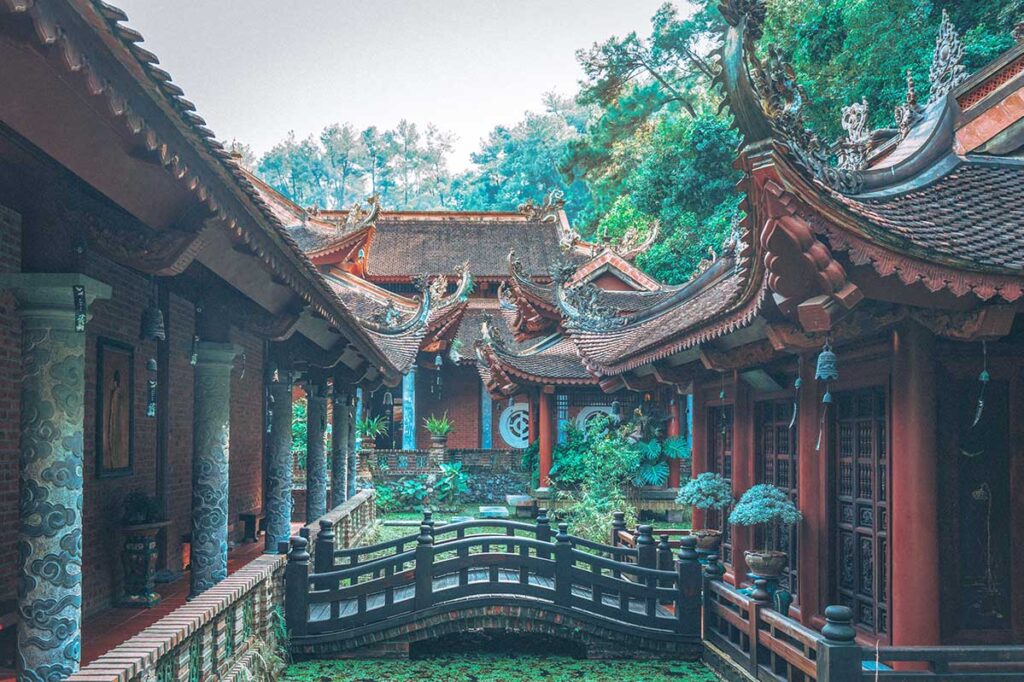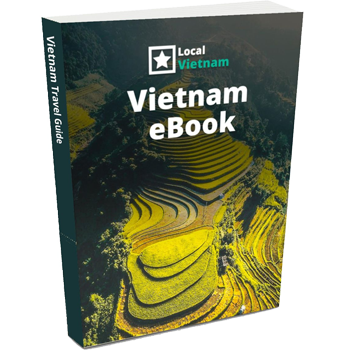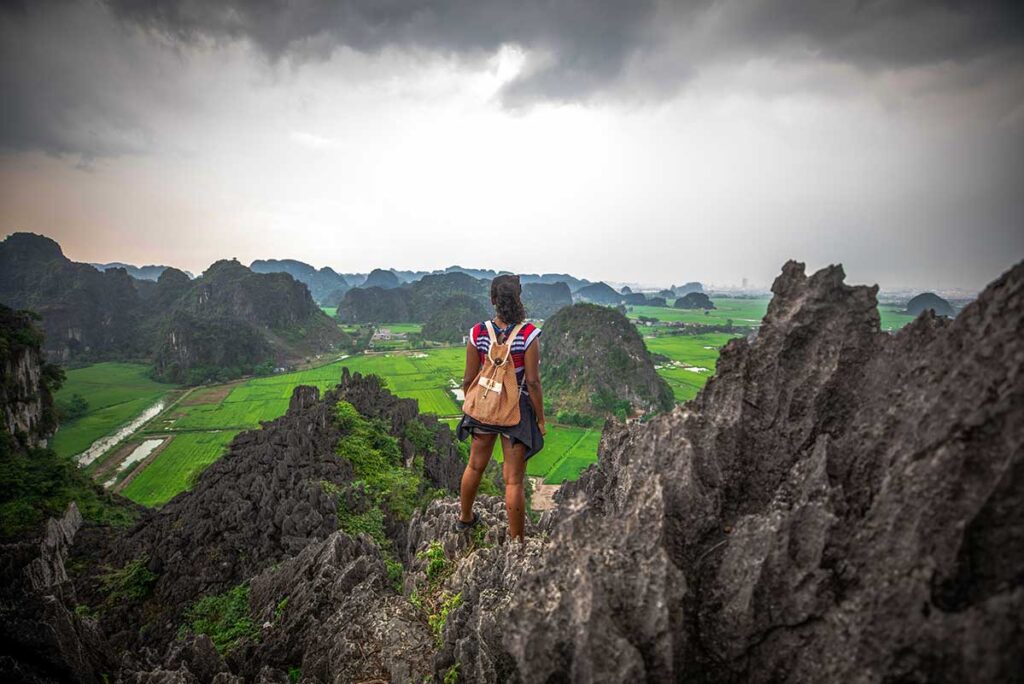What is Dia Tang Phi Lai Pagoda like?
History & Origins
Dia Tang Phi Lai Pagoda was originally built in the 11th century under the name Dung Pagoda. According to local stories, it once served as a place of seclusion for King Tran Nghe Tong and a site where King Tu Duc came to pray for children. Over time, the original structure faded into obscurity, until it was restored and renamed in 2015 by Venerable Thich Minh Quang.
The current name refers to Ksitigarbha Bodhisattva—known in Vietnamese as Địa Tạng—who is associated with guiding souls through suffering. “Phi Lai” can be interpreted to mean “not returning,” a reference in Buddhist symbolism to a realm beyond worldly rebirth. The name suggests that this is a place of peaceful detachment, or a kind of spiritual threshold.
Architecture & Layout
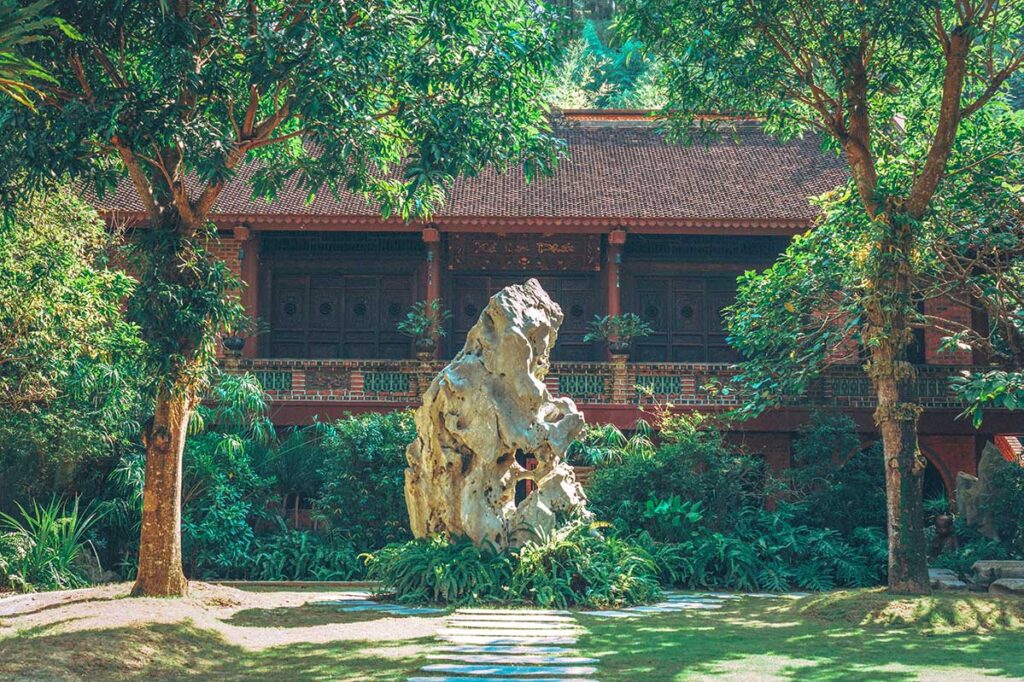
Although recently rebuilt, the pagoda was designed with strong references to traditional Vietnamese Buddhist architecture. Natural materials like wood, clay tiles, and stone are used throughout, with decorative motifs such as lotus blossoms, dragons, phoenixes, and Garuda figures. Some elements—like the clean lines, open courtyards, and minimal ornamentation—give parts of the pagoda a Zen-like or Japanese feel.
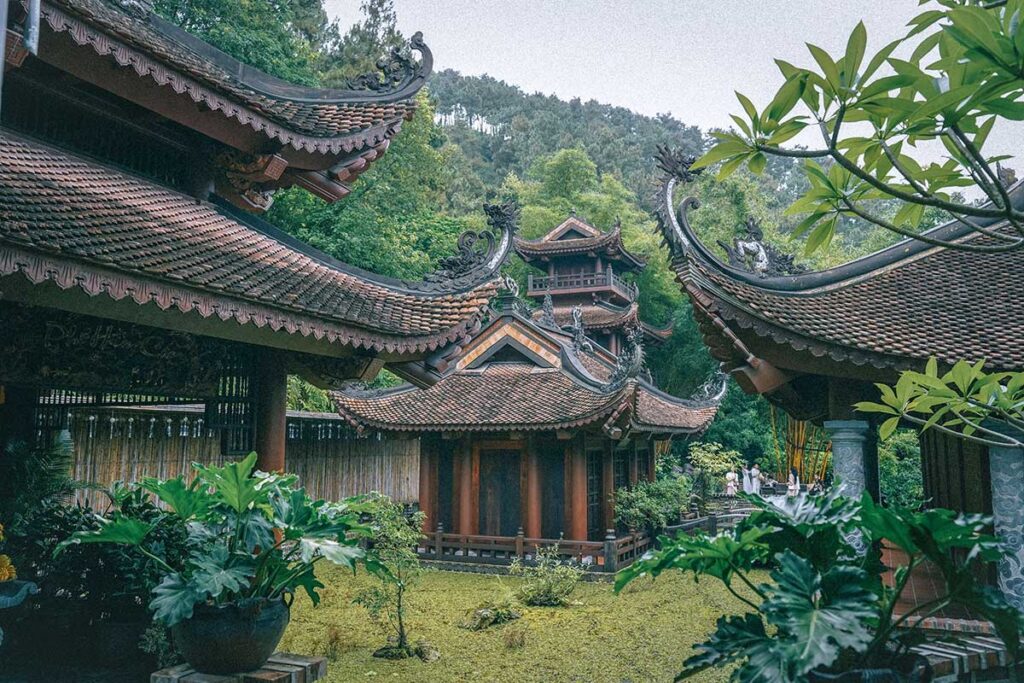
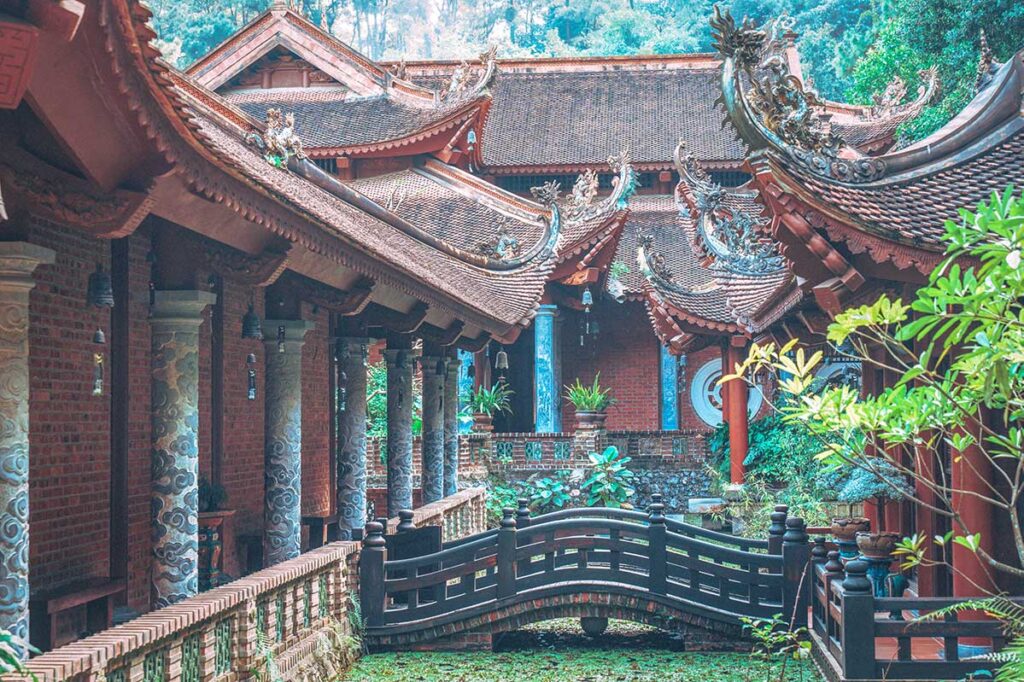
One of the most distinctive features is the white gravel courtyard leading to the main halls. Embedded in the gravel are twelve circular symbols, representing the twelve causes of human suffering in Buddhist philosophy. Visitors are guided to walk only on the dark stone tiles between them, adding a meditative layer to the design.
Atmosphere & Setting
The pagoda is nestled at the base of the Phi Lai mountain range and surrounded by pine trees, creating a tranquil and shaded environment. Its setting feels more like a garden retreat than a religious monument. The grounds include lotus ponds, small vegetable plots, and herbal gardens cared for by monks and volunteers.
Paths wind between trees, resting areas, and reading spaces, making it a quiet place to walk or sit for a while. It’s generally peaceful and exceptionally well-maintained—though weekends and holidays can get busy with local visitors.
Things to see at the Pagoda
The grounds of Dia Tang Phi Lai Pagoda are spacious, with a mix of open courtyards, forest paths, and quiet corners. Rather than being centered around a single building, the complex invites visitors to walk slowly and explore symbolic details scattered throughout. Here are some of the key things to look out for:
1. Tam Bao Hall & Main Ksitigarbha Statue
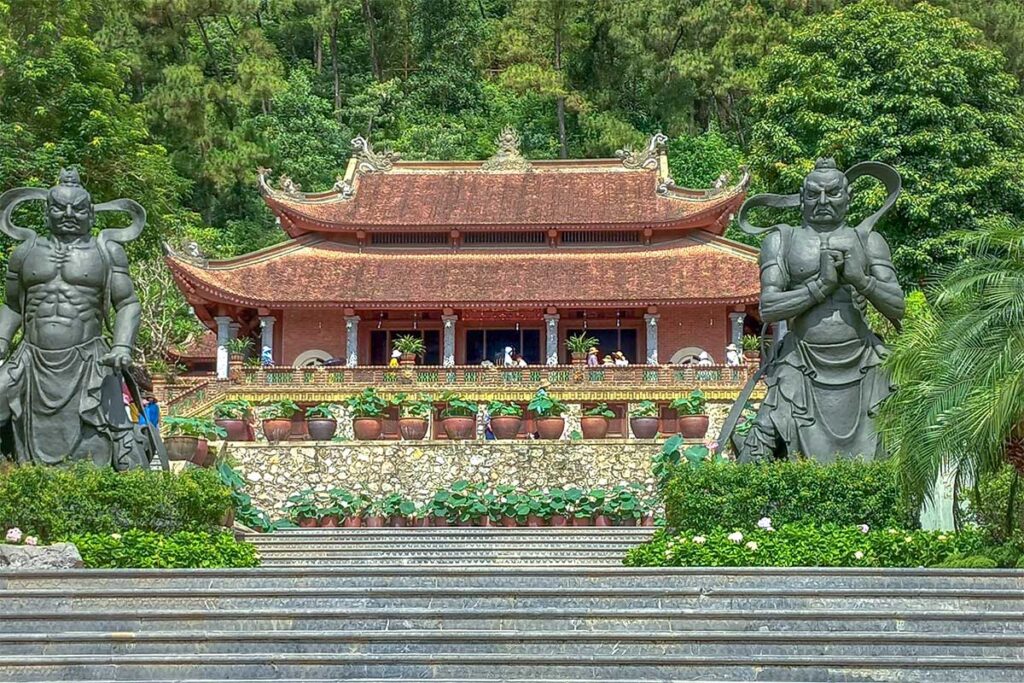
This is the main worship hall of the pagoda and also its most architecturally striking. The building’s color palette—warm brown, soft yellow, and white—feels calm and grounded. At the center sits the statue of Ksitigarbha Bodhisattva (Địa Tạng Vương), whose gentle but dignified presence reflects the spiritual focus of the entire complex.
The layout is simple but balanced, with natural materials and careful design choices that make the space feel sacred without being overwhelming.
2. White Gravel Path & 12 Circles
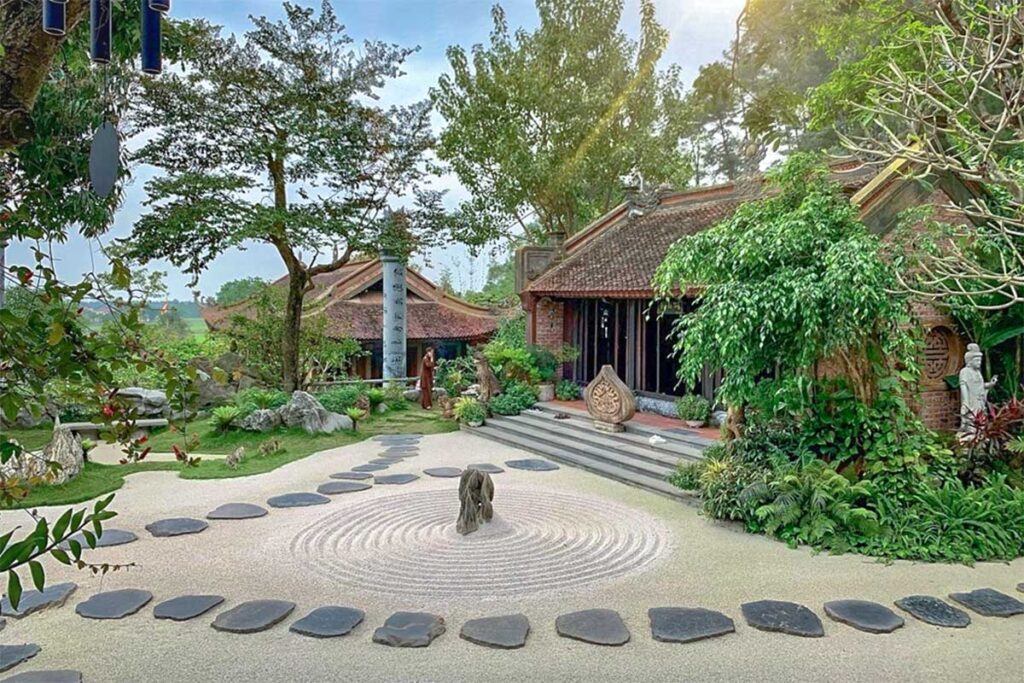
One of the most memorable features is the path leading up to the main buildings, paved not with bricks but with white gravel. Embedded in the gravel are twelve symbolic circles, representing the twelve links in the Buddhist chain of suffering and rebirth.
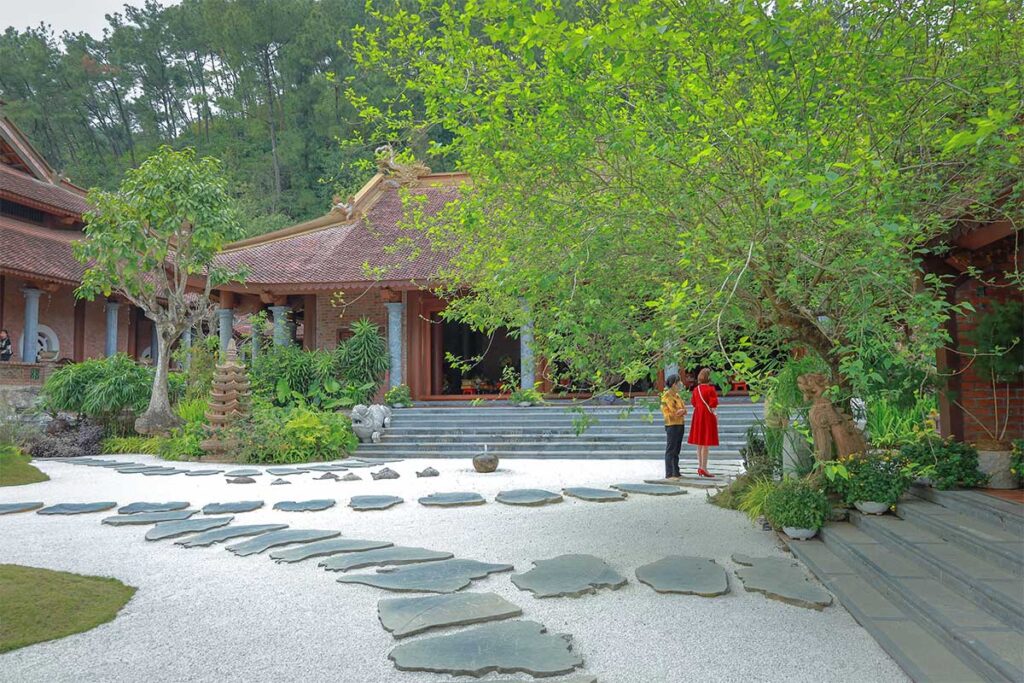
Visitors are encouraged to walk only on the dark stone tiles placed between them, which adds a sense of awareness and ritual to a very simple act—walking. It’s a thoughtful detail, and something rarely seen at other temples in Vietnam.
3. Gardens, Tea Areas & Reading Room
Scattered across the grounds are small gardens growing fruit, herbs, and medicinal plants. These are maintained by the monks and volunteers who live here, and some of the produce is used to prepare vegetarian meals or herbal teas.
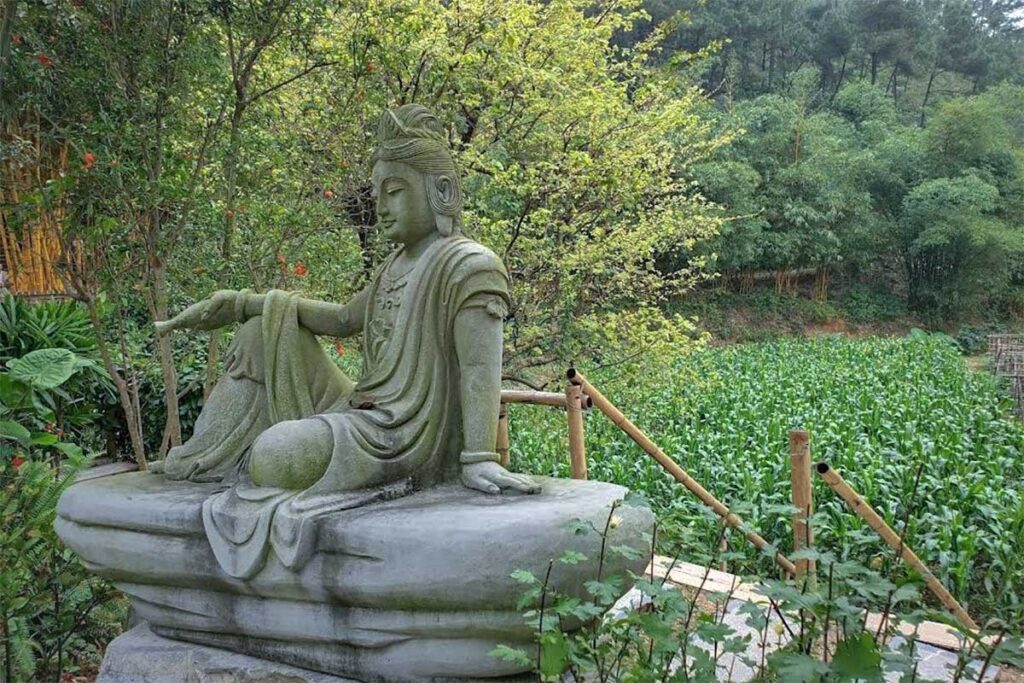
There’s also an outdoor tea area where you can sit under the trees, and a peaceful reading room lined with books—many of them related to Buddhism or mindful living. While mostly in Vietnamese, the setting alone makes it a nice place to take a quiet break.
4. Climb Behind the Pagoda (Optional Hike)
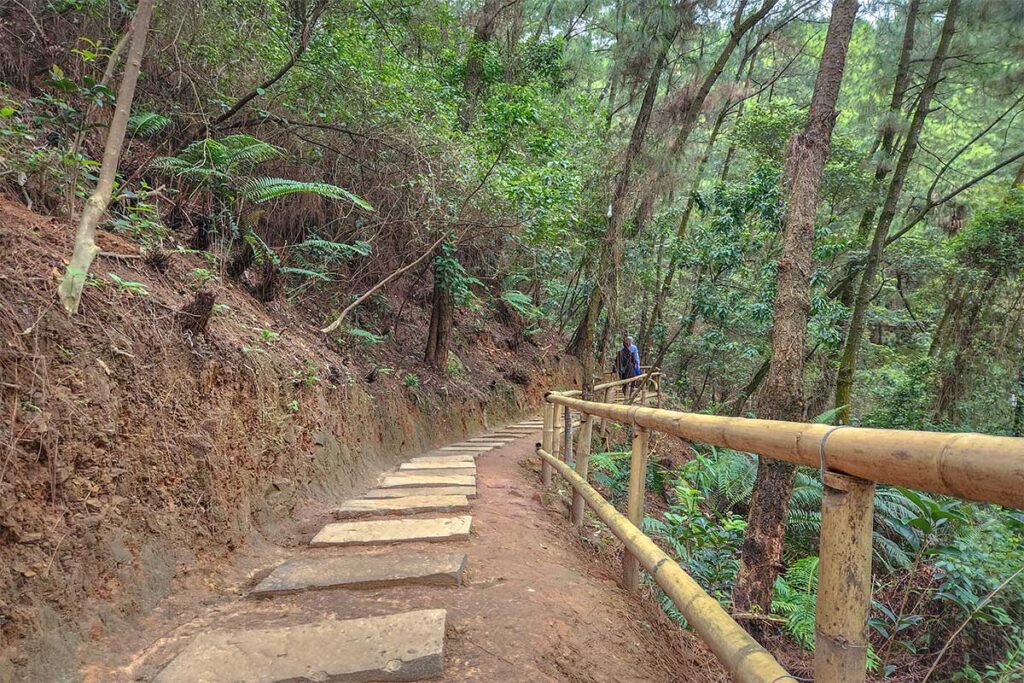
At the back of the complex, you’ll find a small, unsigned trail that leads uphill into the forest. It takes about 10 minutes to reach the top, depending on your pace. There’s no formal viewpoint or signage—just a natural clearing where you can look back down at the pagoda below.
The climb isn’t challenging, but it adds a simple, reflective moment to the visit. Some say the lack of signs symbolizes each visitor’s personal path.
5. Shrines & Other Structures

Beyond the main halls, the pagoda includes several smaller shrines and auxiliary buildings. These include altars dedicated to Avalokitesvara (Quan Âm), Duc Ong, and Duc Thanh Hien, as well as spaces for monks to live, study, and host meditation sessions.
If you wander deeper into the grounds, you’ll also come across smaller statues tucked between trees, bridges crossing small garden streams, and traditional structures built in harmony with the natural surroundings.
Best time to visit
Dia Tang Phi Lai Pagoda is open year-round and can be visited in any season. The temple grounds are always clean and well-kept, but your experience will vary a lot depending on timing.
For the most peaceful atmosphere, it’s best to avoid weekends, Vietnamese holidays, and especially Tet (Lunar New Year) or the 1st and 15th days of the lunar month, when large crowds often come to pray or take photos. The pagoda can get very busy during these times, which takes away from the quiet, reflective vibe that makes this place special.
If you’re interested in local events, the Vu Lan Festival in the 7th lunar month (around August–September) is the most important celebration here, honoring parents and ancestors. There are also Mid-Autumn Festival activities in the 8th lunar month and occasional summer retreats, especially for Vietnamese Buddhist families.
In terms of weather, autumn and spring are ideal. You’ll enjoy cooler temperatures, clearer skies, and fewer visitors—perfect for walking the grounds, climbing the forest trail, or simply sitting with a cup of tea.
How to get there
Dia Tang Phi Lai Pagoda is located in Ha Nam Province, about 70 kilometers south of Hanoi. It’s easily accessed via the expressway and takes roughly 1.5 hours by car. While it’s close enough for a day trip, it’s not a major stop on standard tourist routes, so getting there requires some planning.
Car with Driver (Recommended Option)
The easiest and most flexible way to visit is by renting a private car with driver. This is not a guided tour—the driver won’t join you inside—but it’s a convenient choice, especially if you want to visit other nearby sights like Tam Chuc Pagoda or Thi Son Caves, or if you’re looking to include the pagoda as a stop between Hanoi and Ninh Binh.
The roads are good, and travel is straightforward via the expressway, making this a smooth and efficient option.
Private Tour
There are also a few private tours that include Dia Tang Phi Lai Pagoda, often combined with Tam Chuc Pagoda in a 1-day itinerary. These are not group tours, but rather private car trips with a local guide included—along with entrance fees and lunch.
It’s a suitable option if you prefer a more structured visit or want explanations along the way. However, these tours aren’t widely promoted, so you’ll likely need to request a custom itinerary.
Motorbike (For Experienced Riders)
For travelers with experience and a valid motorbike license, visiting by motorbike is possible—but note that you’ll need to avoid the expressway and take the older highway routes instead.
It can be a scenic ride and works well as part of a larger loop through Ha Nam or Ninh Binh, but the journey is longer and best suited for those already familiar with Vietnam’s road conditions.
Practical information
- Opening hours: Daily from around 06:30 to 18:30
- Entrance fee: Free of charge, as with most temples in Vietnam
- Dress code: Modest clothing is required. If you’re wearing shorts or sleeveless tops, robes are usually available at the entrance
- Facilities: Clean toilets, free drinking water, tea stations, shaded benches, and hammocks for resting
- Food: There are no restaurants nearby, so it’s best to bring snacks. If you contact the temple in advance, it’s sometimes possible to join a vegetarian meal prepared by the monks
Is Dia Tang Phi Lai Pagoda worth visiting?
Dia Tang Phi Lai Pagoda is a beautiful, peaceful place and one of the more visually refined temple sites near Hanoi. The setting among pine forests, the clean white gravel paths, and the thoughtful design make it a pleasant and calming experience—especially on a quiet weekday.
However, for foreign travelers expecting a strong sense of history or cultural depth, the experience may feel a bit surface-level. Despite the site’s ancient origins, much of what you see today was rebuilt in recent years, and it doesn’t offer the same historic atmosphere as older temples in places like Hue, Ninh Binh, or Hanoi.
That said, it’s still worth visiting if you enjoy well-designed religious spaces, Buddhist symbolism, or want a peaceful nature escape. It’s best combined with other nearby stops like Tam Chuc Pagoda or on the way to Ninh Binh—rather than as a standalone destination.
If you’re already in the area or looking for a quiet spiritual site off the usual tourist track, it’s a rewarding detour.
